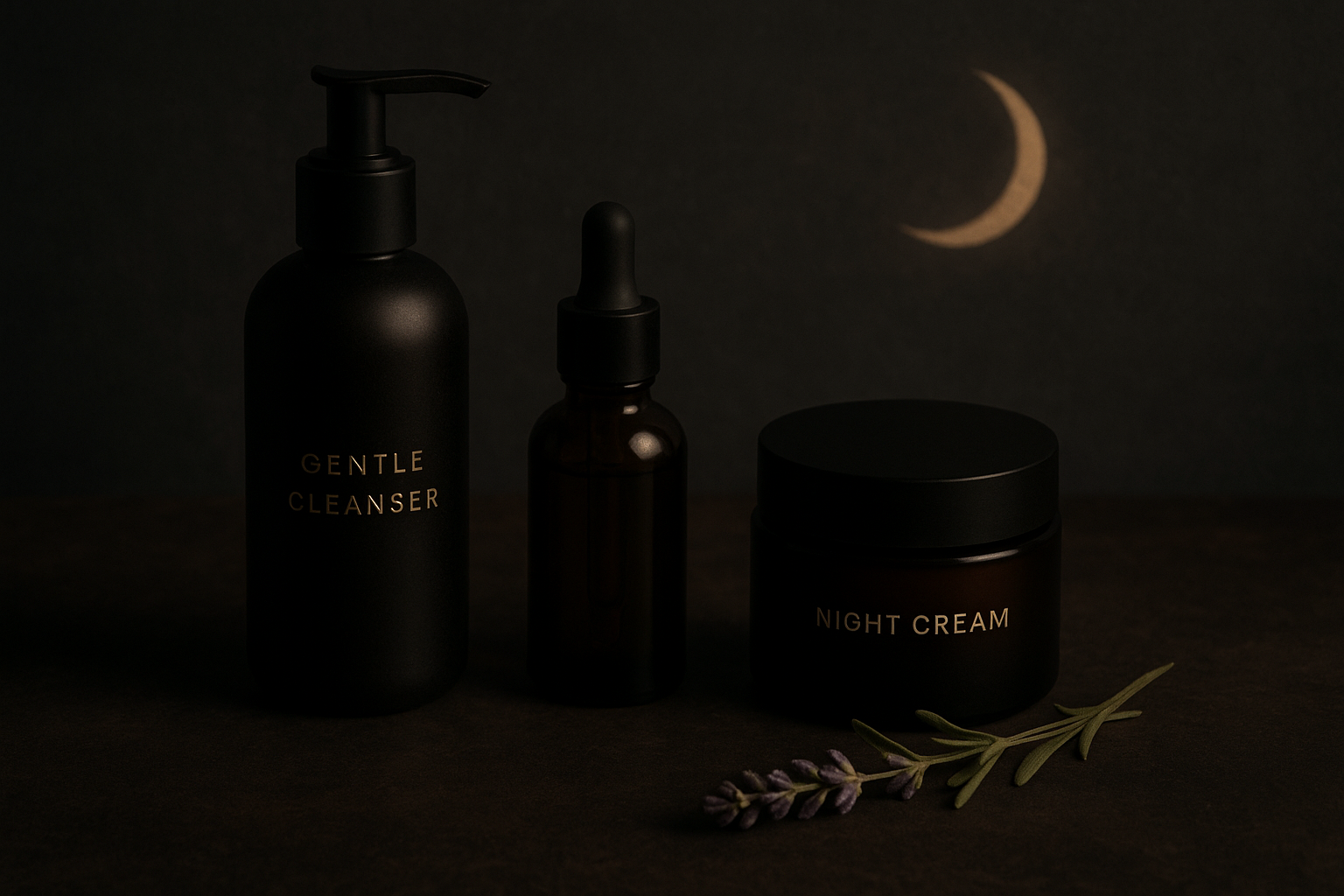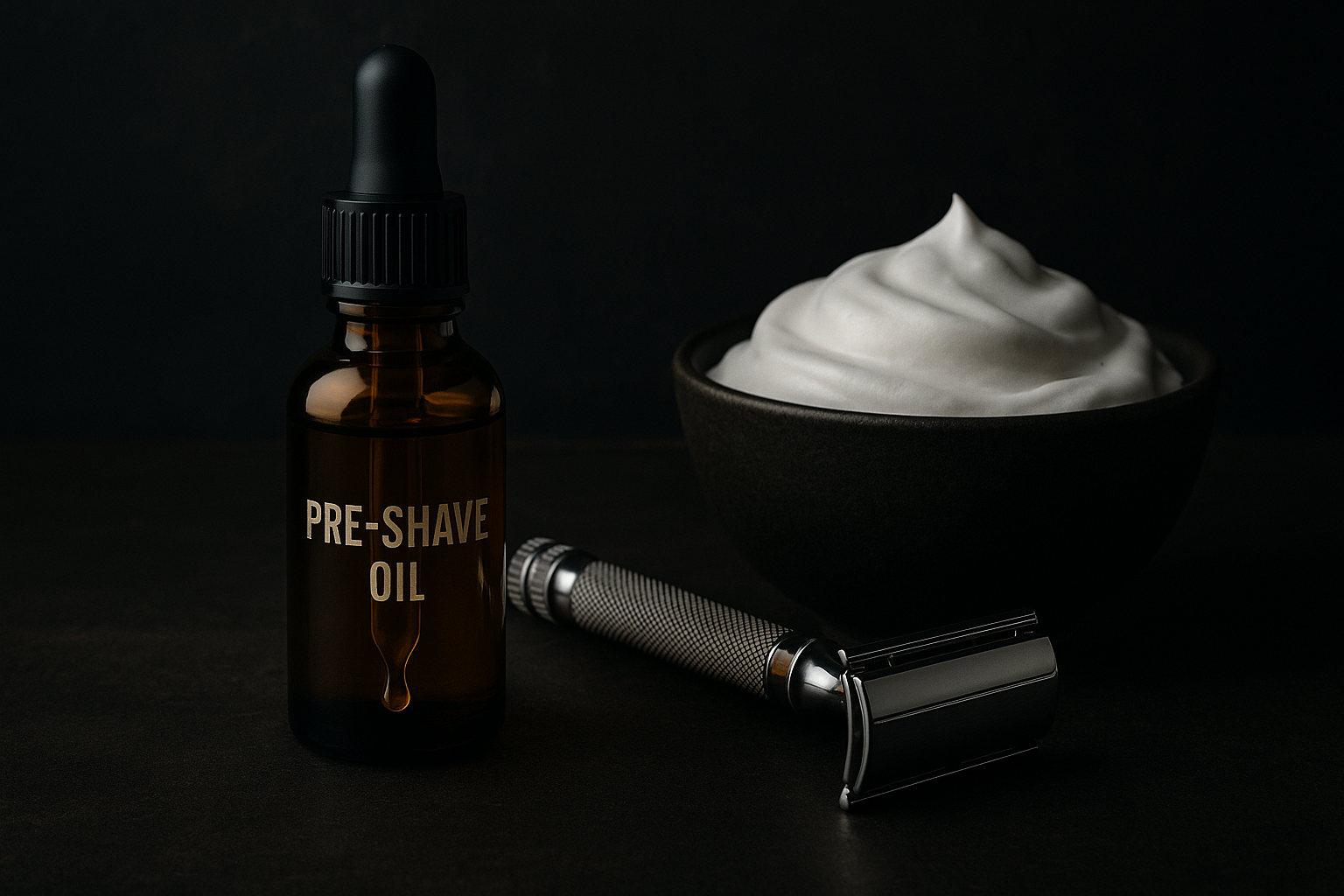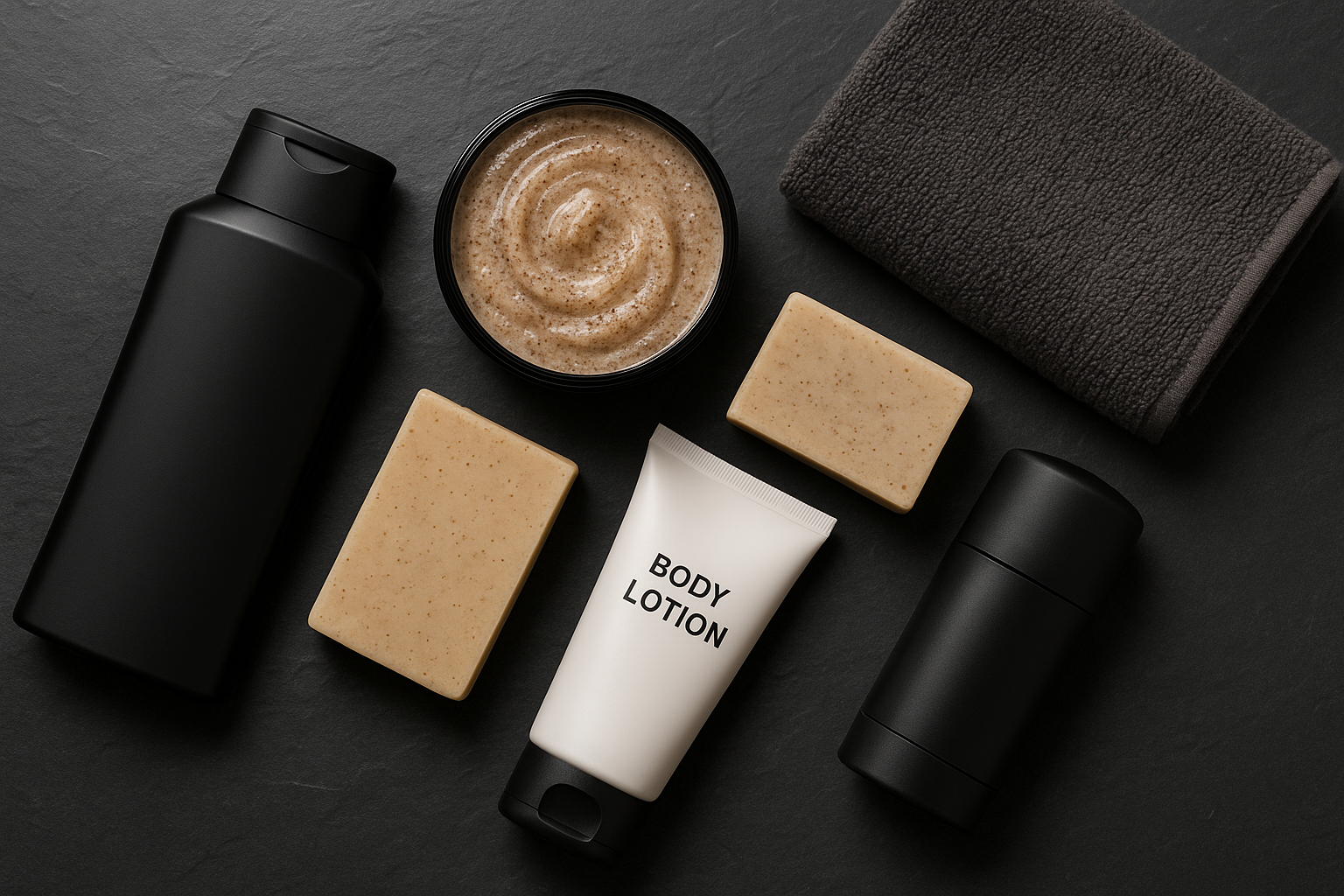That familiar post-shave sting, the unsightly red bumps, the persistent itch – for men with sensitive skin, shaving can often feel like a battle rather than a satisfying grooming ritual. This kind of irritation doesn't just affect your skin's appearance; it can ruin your morning and chip away at your confidence. If you're tired of dreading your daily shave, you're in the right place.
This comprehensive guide is packed with expert-backed sensitive skin shaving tips designed to transform your routine. We'll walk you through every crucial step, from optimal preparation and choosing the best shaving creams for gentle yet effective results, to mastering your technique and implementing essential post-shave care. Get ready to learn how to protect your sensitive skin, banish razor burn for good, and achieve a consistently smooth, comfortable shave every time.
1. Prep Right: The Foundation for a Comfortable Shave with Sensitive Skin
For men with sensitive skin, the pre-shave routine is arguably the most critical phase in achieving an irritation-free experience. Proper preparation can significantly reduce friction, soften hairs, and protect the skin, making it a cornerstone of effective sensitive skin shaving. Don't skip these foundational steps.
Hydrate & Soften: The Power of Warmth and Lubrication
The first goal of your prep is to hydrate the facial hair and the skin. Well-hydrated hairs are softer and significantly easier for a razor to cut, reducing pulling and tugging which are major causes of irritation.
-
Warm Shower or Hot Towel (3-5 minutes): The steam and warmth from a shower or a hot towel (carefully applied) work wonders. This process serves multiple purposes:
- It softens the coarse facial hairs, making them swell slightly and thus easier to slice through. Some sources suggest hair can absorb water, making it about 30% easier to cut.
- It helps to open up pores, allowing for a closer shave and easier release of trapped dirt or sebum.
- It relaxes the facial muscles and skin, creating a more pliable surface for the razor.
-
Apply a Pre-Shave Oil or Glycerin-Rich Gel: This is a game-changer for sensitive skin. A quality pre-shave product creates an additional layer of lubrication between your skin and the shaving cream, further protecting against nicks and irritation.
- The Seven Potions Pre-Shave Oil Pure Equilibrium, for instance, is formulated with natural oils designed to provide exceptional glide and skin conditioning. Oils like jojoba, apricot kernel, and crambe seed create a slick surface, minimizing razor drag.
- Glycerin-rich gels also work by drawing moisture to the skin and providing a slippery cushion.
- Apply this after your warm water prep and before your shaving cream. Massage it gently into your beard area.
Exfoliate Gently: Clear the Path for the Razor
Regular, gentle exfoliation removes dead skin cells that can clog your razor, lead to ingrown hairs, and create an uneven surface for shaving. However, for sensitive skin, the *type* and *frequency* of exfoliation are crucial.
-
Chemical Exfoliant (PHA or Low-Percent AHA) - Once or Twice Weekly:
- Polyhydroxy Acids (PHAs) like gluconolactone are larger molecules that offer gentler exfoliation than Alpha Hydroxy Acids (AHAs), making them ideal for sensitive skin. They help to dissolve the bonds holding dead skin cells without causing significant irritation.
- Low-percentage AHAs (e.g., lactic acid around 5%) can also be effective if your skin tolerates them, but start slowly.
- Apply these on non-shaving days or several hours before a shave to avoid sensitizing the skin immediately prior to razor use.
- Soft Scrub with Finely Milled Beads (Optional & Infrequent): If you prefer a physical exfoliant, ensure it contains very fine, smooth, and round particles (like jojoba beads). Avoid harsh, jagged scrubs (e.g., crushed nuts) which can cause micro-tears and worsen irritation on sensitive skin. Use extremely light pressure.
Why Exfoliation Matters for Sensitive Skin Shaving: By removing the build-up of dead skin cells, you reduce the likelihood of hairs becoming trapped and growing inwards (ingrown hairs – a major source of bumps and irritation). It also ensures your razor can glide more smoothly over the skin, leading to a closer, more comfortable shave with fewer passes needed.
Proper preparation is not just an extra step; for sensitive skin, it's the difference between a dreaded chore and a comfortable grooming experience.
2. Choose the Right Tools & Creams: Your Sensitive Skin Shaving Arsenal
Once your skin is prepped, the tools and products you use for the actual shave are paramount. For those with sensitive skin, selecting the best shaving creams and the right type of razor can dramatically reduce irritation and prevent razor burn prevention efforts from going to waste.
Razor Selection: Precision Over Multi-Blade Aggression
-
Single-Blade Safety Razor vs. Multi-Blade Cartridge: This is a significant point of discussion for sensitive skin.
-
Multi-blade Cartridges (3-5+ blades): These are designed to lift and cut hair below the skin's surface with successive blades. While this can provide a very close shave, it often leads to issues for sensitive skin:
- Increased friction and irritation from multiple blades passing over the skin.
- Higher likelihood of hairs being cut too short, increasing the risk of ingrown hairs as they regrow.
- The "lift and cut" mechanism can pull on hairs, causing discomfort.
-
Single-Blade Safety Razors: A traditional double-edge safety razor, like the Seven Potions Double Edge Safety Razor, uses a single, sharp blade to cut hair at the skin's surface.
- Benefits: Typically causes less irritation as only one blade edge passes over the skin per stroke. Reduces the risk of ingrown hairs because the hair isn't cut beneath the skin level. Allows for more control over blade angle and pressure.
- Clinical findings and anecdotal evidence often suggest that safety razors can lead to less shaving-induced erythema (redness) compared to multi-blade cartridges for many individuals. A study published in PMC (NCBI) highlighted that safety razors demonstrated a lower incidence of erythema.
-
Multi-blade Cartridges (3-5+ blades): These are designed to lift and cut hair below the skin's surface with successive blades. While this can provide a very close shave, it often leads to issues for sensitive skin:
- Replace Blades Regularly: A dull blade is a major cause of irritation, tugging, and nicks, regardless of razor type. Replace your safety razor blade after 3-7 shaves (depending on your beard coarseness and blade quality). For cartridges, follow manufacturer recommendations or change when you feel any drag.
Shaving Cream Essentials for Sensitive Skin:
The purpose of shaving cream is to hydrate the hair, lubricate the skin, and provide a protective cushion. For sensitive skin, the formulation is key.
-
Fragrance-Free and Soap-Free Formulas:
- Artificial fragrances are common irritants. Opt for "fragrance-free" or products scented only with minimal, natural essential oils if your skin isn't sensitive to them.
- Traditional soap-based creams can be alkaline and strip the skin's natural acid mantle, leading to dryness and irritation. Look for "soap-free" or pH-balanced formulas.
- Minimal Surfactants: While some surfactants are needed to create lather, overly harsh ones can strip protective oils.
-
Look for Soothing and Moisturizing Additives:
- Aloe Vera: Known for its calming and hydrating properties.
- Allantoin: Helps to soothe irritation and promote skin healing.
- Shea Butter: Provides rich moisturization and emollience.
- Glycerin: A humectant that helps skin retain moisture.
- The Seven Potions Shaving Cream is crafted with sensitive skin in mind, incorporating natural ingredients that aim to provide a rich lather and protect the skin. User satisfaction surveys for fragrance-free shaving creams often highlight improved comfort and reduced redness.
Texture & Application of Shaving Cream:
- Rich, Whipped Cream: A thick, creamy lather generally holds more water against the skin and provides a better cushion than thin gels or foams that can dry out quickly. Using a shaving brush can help create a superior lather from a quality cream.
- Application: Apply the shaving cream in gentle, circular motions using your fingertips or a shaving brush. This helps to lift the hairs and ensure an even, protective coating over the entire area to be shaved. Allow it to sit for a minute or two to further soften the hairs.
Investing in the right razor and a high-quality, sensitive skin-friendly shaving cream lays the groundwork for a significantly more comfortable shave.

3. Master the Technique: Gentle, Effective Strokes for Zero Irritation
Even with the best prep and products, poor shaving technique can still lead to irritation, nicks, and the dreaded razor burn, especially on sensitive skin. Mastering a gentle, effective technique is a crucial element of razor burn prevention. The goal is to cut the hair cleanly with minimal stress to the skin.
Short, Light Passes: Let the Razor Do the Work
- No Pressure Needed: This is especially true when using a sharp, single-blade safety razor like the Seven Potions Double Edge Safety Razor. The weight of the razor itself, combined with a sharp blade, is sufficient to cut the hair. Pressing down hard on the razor increases friction, scrapes away skin cells, and significantly raises the risk of irritation, nicks, and cuts.
- Short Strokes: Use short, controlled strokes (about 1-2 inches long) rather than long, sweeping motions. This gives you more control and helps maintain the correct blade angle.
Shave With the Grain (WTG) First
- Understanding Your Grain: Pay attention to the direction your facial hair grows. This can vary on different parts of your face (e.g., cheeks, neck, chin). Shaving "with the grain" means shaving in the same direction your hair grows.
- First Pass - Always WTG: Your initial pass should always be with the grain. For many men with sensitive skin, a single pass WTG provides a sufficiently close and comfortable shave.
-
Across or Against the Grain (XTG/ATG) – With Caution:
- If you desire a closer shave after the first WTG pass, you can consider a second pass.
- XTG (Across the Grain): Shaving perpendicular to the direction of hair growth. This is generally less irritating than going directly against the grain. Re-lather before this pass.
- ATG (Against the Grain): Shaving in the opposite direction of hair growth. This provides the closest shave but also carries the highest risk of irritation, razor burn, and ingrown hairs for sensitive skin. If you choose to do an ATG pass, ensure your skin is very well lubricated, use extremely light pressure, and consider it only after one or two less aggressive passes. Many with sensitive skin avoid ATG passes altogether.
Maintain the Correct Angle & Gently Stretch the Skin
- Blade Angle (for Safety Razors): When using a safety razor, maintaining the correct blade angle (typically around 30 degrees relative to your skin) is crucial for effective cutting without scraping. You'll hear and feel the blade cutting the hair when the angle is right. This takes a little practice.
- Gentle Skin Stretch: Use your free hand to gently stretch the skin taut in the area you are about to shave. This creates a flatter, smoother surface for the razor to glide over, reducing the chances of nicks and helping to lift the hairs slightly for a cleaner cut. Avoid overstretching, as this can also lead to irritation.
Rinse Your Blade Often
- Clear Clogs: Rinse your razor blade under warm water every 1-3 strokes, depending on beard density and cream build-up. A clogged razor (with hair and shaving cream) will not cut effectively and will drag across the skin, causing irritation.
- Maintains Lubrication: Rinsing also helps to keep the blade and the shaving area moist and lubricated.
Practicing these gentle yet effective techniques will significantly reduce mechanical irritation and help you achieve a consistently smooth, burn-free shave.
4. Post-Shave Care: Soothe & Seal Your Sensitive Skin
What you do immediately after the razor leaves your skin is just as important as the preparation and shaving technique, especially for sensitive skin shaving. The primary goals of post-shave care are to calm any potential irritation, restore lost moisture, and protect the freshly shaved skin. This step is vital for long-term razor burn prevention.
Cool Rinse & Gentle Pat Dry
-
Cool Water Splash: Once you’ve finished shaving, rinse your face thoroughly with cool or lukewarm water. Cool water helps to:
- Soothe the skin and reduce any immediate redness or inflammation.
- Remove any remaining shaving cream residue.
- Help constrict blood vessels and (anecdotally) close pores, though pores don't technically open and close with temperature like muscles.
- Blot, Don’t Rub: Gently pat your skin dry with a clean, soft towel. Avoid rubbing, as this can cause unnecessary friction and aggravate freshly shaved, sensitive skin.
Aftershave Balm vs. Splash: The Gentle Choice
The type of aftershave product you choose can make a huge difference for sensitive skin.
- Alcohol-Based Splashes (Generally Avoid): Many traditional aftershave splashes have a high alcohol content. While alcohol can act as an antiseptic, it is also extremely drying and can sting significantly on sensitive or freshly abraded skin, exacerbating irritation and redness. Products containing menthol or high levels of synthetic fragrances can also cause stinging and sensitivity.
-
Alcohol-Free Aftershave Balm (The Winner for Sensitive Skin): A high-quality, alcohol-free aftershave balm is the preferred choice. Look for balms specifically formulated for sensitive skin.
- The Seven Potions Post-Shave Balm is an excellent example, designed to calm, hydrate, and protect.
-
Key Ingredients to Seek in a Balm:
- Soothing Agents: Aloe vera, chamomile, allantoin, calendula.
- Hydrators: Glycerin, hyaluronic acid.
- Barrier-Supporting Lipids/Emollients: Shea butter, jojoba oil, squalane.
- Repairing Ingredients: Panthenol (Pro-vitamin B5) helps with skin healing and hydration. Ceramides help to restore the skin's natural barrier.
For a deeper look into the benefits of different shaving products, including aftershaves, and how they can enhance your routine, especially if you use tools like a safety razor, you might find comprehensive reviews insightful.
Barrier Repair: Lock in Moisture and Reinforce
Even after a soothing balm, your skin barrier needs reinforcement.
- Lightweight Moisturizer: If your aftershave balm is very light, or if your skin still feels like it needs more, follow up with a gentle, fragrance-free facial moisturizer. The Seven Potions Anti-Ageing Moisturiser can serve this purpose well, offering hydration without heaviness.
-
Key Ingredients for Barrier Repair:
- Niacinamide (Vitamin B3): Known for its ability to improve skin barrier function, reduce redness, and calm inflammation.
- Ceramides, Cholesterol, Fatty Acids: These are the skin's natural lipids; products containing them help replenish what might have been compromised during shaving.
- Healing Ointments (for severe dryness/irritation - sparingly): If you have particularly irritated spots or very dry patches, a very small amount of a bland healing ointment (ensure it's non-comedogenic if prone to breakouts) can provide an extra occlusive layer overnight.
Consistent and gentle post-shave care is your final defense against irritation, ensuring your skin recovers quickly and stays comfortable until your next shave.

5. Weekly Rituals & Lifestyle Hacks for Long-Term Sensitive Skin Relief
Achieving consistently comfortable shaves with sensitive skin goes beyond just your daily routine. Incorporating weekly treatments and adopting skin-friendly lifestyle habits can significantly improve your skin's resilience and reduce overall sensitivity, making your sensitive skin shaving experience progressively better over time.
Weekly Deep Soothing Mask: Calm and Clarify
Once a week, treat your skin to a deep soothing mask to help calm any lingering inflammation, draw out impurities from pores, and provide an intensive hydration boost.
-
Clay-Based Masks (for Oily/Combination Sensitive Skin):
- Choose gentle clays like Kaolin or Bentonite. These help to absorb excess oil and impurities without being overly drying like some harsher clays.
- Look for formulations that also include soothing ingredients like aloe vera, chamomile, or allantoin to counteract any potential drying effect.
-
Oat-Based Masks (for Dry/Irritated Sensitive Skin):
- Colloidal oatmeal is a well-known skin protectant and anti-inflammatory ingredient. Masks rich in oatmeal can significantly soothe redness, itching, and irritation.
- Often combined with other hydrating ingredients like honey or glycerin.
- Application: Apply to clean skin, leave on for 10-15 minutes (or as directed), and rinse off gently with lukewarm water. Follow with your usual post-shave balm or moisturizer.
Humidify & Hydrate: Environmental and Internal Moisture
- Use a Humidifier: Dry indoor air, especially during winter or in air-conditioned environments, leaches moisture from your skin. Using a humidifier in your bedroom or office helps to maintain an optimal humidity level (around 40-60%), reducing transepidermal water loss and keeping your skin more hydrated and less prone to irritation.
- Stay Hydrated Internally: Drinking an adequate amount of water daily (aim for 2-3 liters, depending on your activity level and climate) helps to keep your skin cells plump and supports overall skin elasticity and barrier function.
Sleep & Stress Management: The Skin-Calming Connection
- Prioritize Sleep (7-9 hours): During sleep, your body undergoes repair processes, including skin cell regeneration. Lack of sleep can increase cortisol levels (the stress hormone) and impair skin barrier function, making it more susceptible to sensitivity and irritation.
- Manage Stress: Chronic stress also elevates cortisol, which can trigger inflammation and worsen skin conditions like eczema, psoriasis, and general sensitivity. Incorporate stress-reducing activities into your routine, such as exercise (though cleanse properly afterwards!), meditation, yoga, spending time in nature, or engaging in hobbies.
Dermatologist-Backed Insights:
- Optimal Exfoliation Frequency and pH: Dermatologists often recommend that individuals with sensitive skin exfoliate less frequently, typically 1-2 times a week at most, using gentle chemical exfoliants (like PHAs or low-concentration AHAs) rather than harsh physical scrubs. The American Academy of Dermatology (AAD.org) provides excellent resources on general skincare, often emphasizing gentle approaches for sensitive conditions. Maintaining a skin-friendly pH (around 5.5) in cleansers and leave-on products is also crucial to support the skin's natural acid mantle and barrier function.
By adopting these weekly rituals and lifestyle adjustments, you create a supportive environment for your skin, helping to reduce its baseline sensitivity and making each shave a more comfortable and less reactive experience.
Conclusion: Your Five Steps to a Consistently Burn-Free Shave
Shaving with sensitive skin doesn't have to be a daily ordeal of redness, itching, and irritation. By embracing a holistic approach that prioritizes gentle care at every stage, you can transform your shaving experience. The journey to a consistently burn-free, comfortable shave hinges on five key pillars: meticulous preparation to soften hair and protect the skin, choosing the right tools like a single-blade safety razor and specialized sensitive skin shaving cream, mastering a precise and gentle technique, implementing soothing post-shave care with products like an alcohol-free balm, and adopting supportive weekly rituals and lifestyle habits.
Each step, from the initial warm water splash to the final application of a barrier-repairing moisturizer, contributes to minimizing irritation and maximizing comfort. Armed with these expert sensitive skin shaving tips and a commitment to quality products, you can finally achieve the smooth, calm, and confident post-shave feel you deserve, every single time.
Ready for Your Best Shave Yet?
- Master Your Routine: While we don't have a downloadable PDF checklist, we encourage you to use the sections of this article to create your own personalized "Sensitive Skin Shaving Checklist" to ensure you cover all the crucial steps.
- Shop the Seven Potions Sensitive Shave Collection: Explore our curated selection of shaving essentials, including our Pre-Shave Oil, Shaving Cream, Double Edge Safety Razor, and Post-Shave Balm, all dermatologically tested and formulated with high-quality, natural ingredients designed for a gentle yet effective shave.
- Share Your Smooth Success: Found these tips helpful? Achieved your smoothest shave ever with Seven Potions? Share your stories and photos on social media using the hashtag #BurnFreeShave and #SevenPotionsShave for a chance to get tips from the community and participate in seasonal giveaways!



